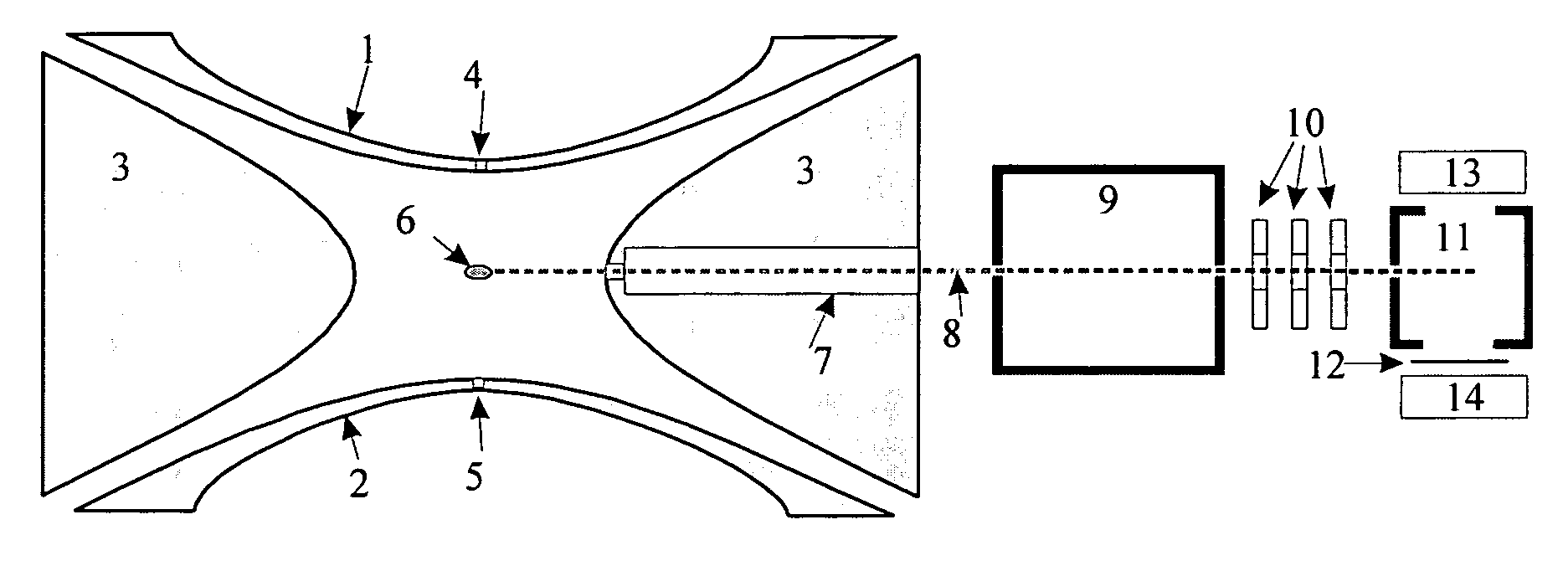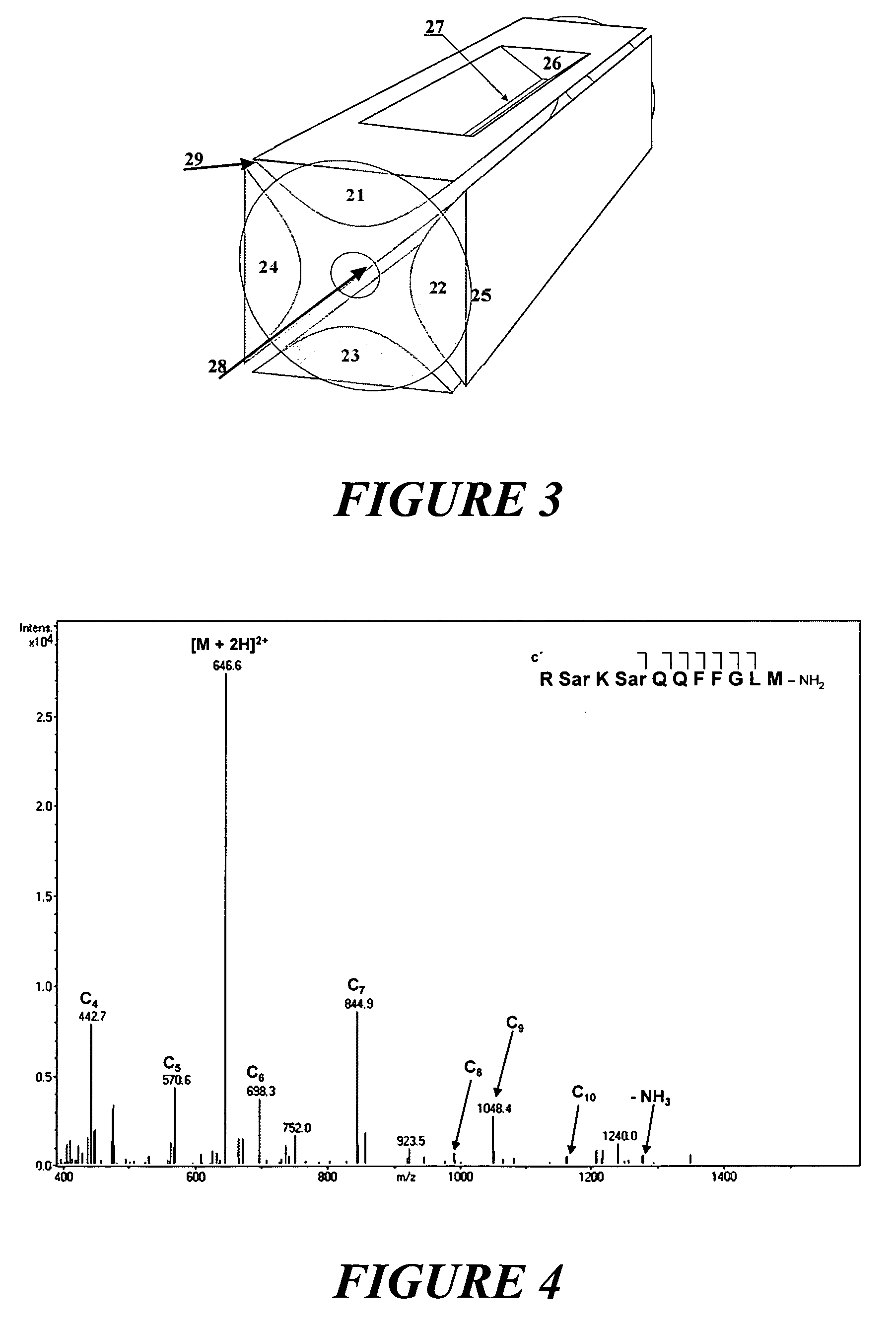Ion fragmentation by reaction with neutral particles
a neutral particle and fragmentation technology, applied in the field of biopolymerization, can solve the problems of large task of human proteomics, frequent incomplete fragmentation, loss of side chains, etc., and achieve the effect of relatively high yield of fragment ions
- Summary
- Abstract
- Description
- Claims
- Application Information
AI Technical Summary
Benefits of technology
Problems solved by technology
Method used
Image
Examples
Embodiment Construction
[0032] A particularly favorable embodiment of a method and apparatus are described with the help of FIG. 1. Analyte ions are stored as a cloud (6) in an ion trap made of two hyperboloidal end cap electrodes (1) and (2) and a hyperboloidal ring electrode (3). An RF voltage of a few kilovolts with a frequency of around one megahertz is applied to the ring electrode (3), generating a largely quadrupolar RF field in the interior. Integrated over time, this RF field produces an effect on confined ions which can be described by a pseudopotential. The pseudopotential has a minimum in the center of the ion trap and increases quadratically in all directions. It thus forms a potential well for the ions, in which they can execute harmonic oscillations around the center or through the center.
[0033] The analyte ions were injected into the ion trap through the aperture (4) in the end cap electrode (1). In the ion trap there is a collision gas (usually helium) at a pressure of a few hundredths of...
PUM
| Property | Measurement | Unit |
|---|---|---|
| mass | aaaaa | aaaaa |
| energy | aaaaa | aaaaa |
| frequency | aaaaa | aaaaa |
Abstract
Description
Claims
Application Information
 Login to View More
Login to View More - R&D
- Intellectual Property
- Life Sciences
- Materials
- Tech Scout
- Unparalleled Data Quality
- Higher Quality Content
- 60% Fewer Hallucinations
Browse by: Latest US Patents, China's latest patents, Technical Efficacy Thesaurus, Application Domain, Technology Topic, Popular Technical Reports.
© 2025 PatSnap. All rights reserved.Legal|Privacy policy|Modern Slavery Act Transparency Statement|Sitemap|About US| Contact US: help@patsnap.com



